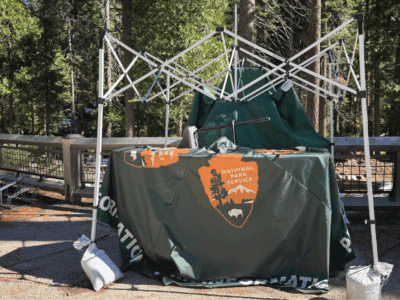The Urgent Need to Address Fire Risk
We need legislative action to accelerate fire risk reduction in general
The Manchin-Barrasso energy permitting bill that I’ve posted about is not the only permitting reform bill that died with the last Congress. The House had passed the “Fix Our Forests Act,” legislation sponsored by Rep. Bruce Westerman, a Republican from Arkansas, with a focus on trying to reduce fire risks on federal (and other) lands. While it is unlikely that permitting reform will be part of any reconciliation process, some sort of legislation is likely to reappear, and if so, will require bipartisan support to advance.
More importantly, as the ongoing fires in Southern California tragically emphasize, there is a critical need for further action to address fire risks on federal, state, and private lands. More and more lands have burned over the past two decades, and the human, economic, and ecological costs of those fires have continued to escalate. Fire contributes to a multitude of problems: Most obviously, it can kill and injure people and destroy their homes and livelihoods. But the smoke from large fires poses real health risks. High-intensity, large-scale fires can wreak severe ecological damage, changing ecosystem states and threatening species. Severe fire can affect water supply and quality by causing erosion. And increased fire risk has prompted an insurance crisis that threatens housing affordability in states like California.
The fire problem is only getting worse. Our increased fire risks is in part the legacy of decades of fire suppression, allowing fuels to accumulate in forests – as well as forest management that at first prioritized harvesting large trees for commercial purposes, and then clamped down on all commercial tree harvesting. It is also in part the product of climate change, which increases the risks of extreme droughts, wind events, and heat waves that can cause fire risks to escalate. And it is also in part the product of invasive species – such as weeds and tree diseases and pests – that make forests more vulnerable to fire. None of those problems are getting any better with time, absent direct management intervention.
And that is the crux. Getting out of our fire predicament will require affirmative, active management of our forests and other natural landscapes. But getting broad agreement as to what kind of management we should pursue can be tough, especially as active management will necessarily come with tradeoffs with respect to other values, and with inherent risks. For instance, there is no question that many ecosystems, particularly in the West, require much more fire, on a regular basis, but at low-intensity levels, for their health – but reintroducing fire (for instance through prescribed burns) can create smoke that has public health impacts, and can create risks of uncontrolled, damaging burns. Alternatively, we can use mechanical thinning of forests to reduce fire risks – sometimes an essential step for forests with too much fuel to directly introduce fire to. But mechanical thinning is costly, and those who do not trust the Forest Service (or other government agencies) to use good faith and judgment in when to use thinning fear it is a cover for reintroducing massive commercial logging from decades ago, logging that made fire risks worse.
Legislation early in the Biden Administration created a nonpartisan commission to identify key recommendations for addressing fire – and many of those recommendations were included in Westerman’s legislation. For instance, the legislation takes an important step towards recognizing fire as an issue on an equal level of importance with other natural resource management issues such as forests, range, and wildlife. It sets up a framework to identify “firesheds” that define the geography within which management for fire risk is best organized. It creates a system to identify which firesheds are most at risk, to identify management options to address those risks, to compile and distribute data about fireshed management and risks, and to advance research.
The legislation also follows the commission’s recommendations by expanding flexibility and coordination for funding and management across federal, state, and tribal entities. Fire (like many other natural resources) does not necessarily track human jurisdictional or property boundaries. Moreover, the challenge is so severe that we need as much cooperation as possible to address it. And because the specific ecological and social context matters for what kinds of management we should do to address fire risk, allowing for collaborative decisionmaking with state, local, and tribal governments makes a lot of sense too.
So it’s not a surprise that most of the bill had unanimous, bipartisan support. What didn’t receive unanimous support, and what was contentious, were proposals to change the way that environmental review under the National Environmental Policy Act (NEPA), regulations under other federal laws such as the Endangered Species Act (ESA), and litigation would apply to management projects in “firesheds.” I’ll cover that controversy, and the concerns I had with those proposed changes, in the next post.
Reader Comments
One Reply to “The Urgent Need to Address Fire Risk”
Comments are closed.





D.E. Calkin et al., 2023. Wildland-urban fires aren’t actually a wildfire problem. Proceedings of the National Academy of Sciences 120(51). December 13, 2023. Authors are some of the most prominent experts on wildfire.
https://www.pnas.org/doi/full/10.1073/pnas.2315797120